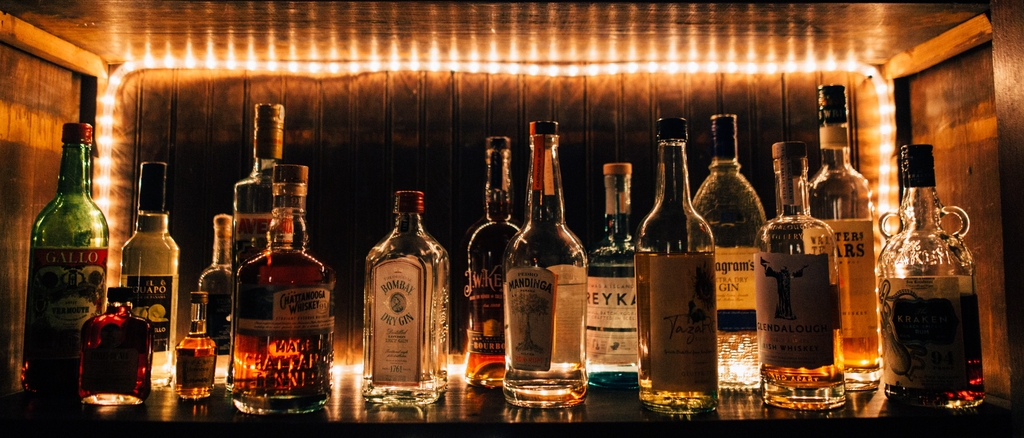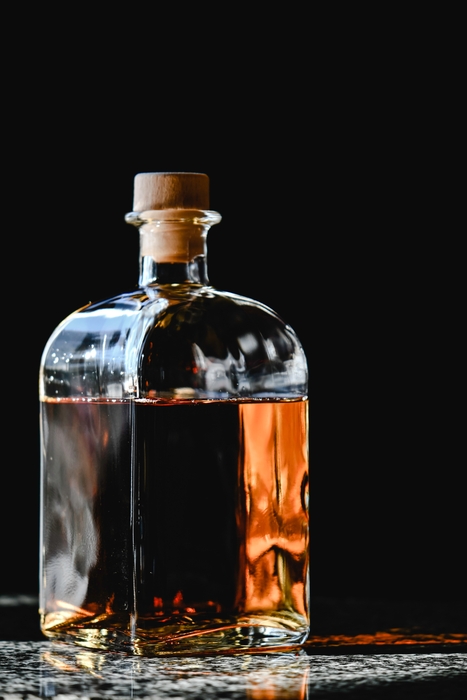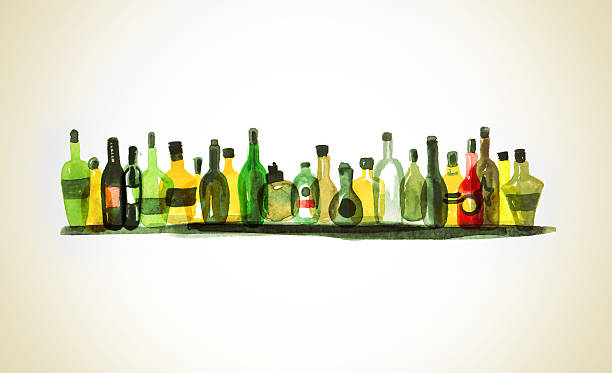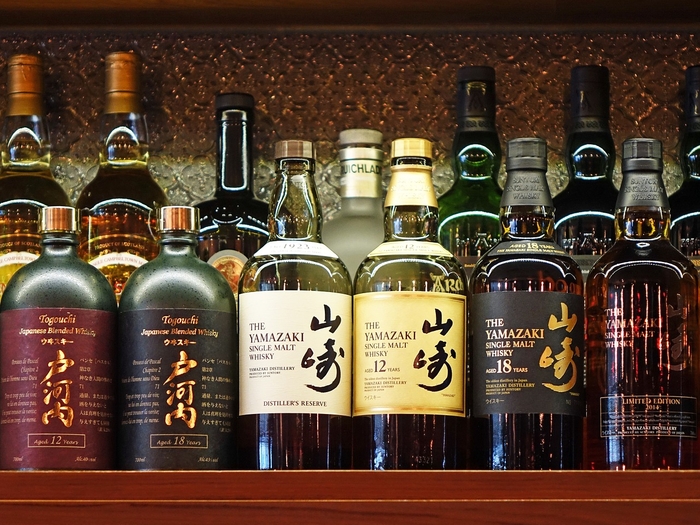
Whether you are a long-time or future spirits lover, you will have noticed that bottles of rum and whisky quickly accumulate as you fall in love, discover and take advantage of the various opportunities that arise. We often tend to collect more than we can drink with reasonable consumption, so the question of conservation naturally arises. The good news is that rum , whisky, cognac and all the other spirits that we love are ultimately quite easy to preserve. Unlike wine or sake, which are living products, most distilled beverages no longer age once bottled, particularly thanks to their high alcohol content.
However, there are a few simple rules that will allow you to optimally preserve your precious liquids.
Before opening the bottle
Always store your bottles upright
Cork stoppers can quickly deteriorate due to the high alcohol content. Avoid prolonged contact with the liquid and therefore favour the upright position. The risk is to have a cork taste that spreads in the bottle, an opening spoiled by a cork that disintegrates, or a loss of seal that can cause premature evaporation or oxidation.
On the other hand, you should avoid having a cork that dries out and risks breaking when opening. It is therefore recommended to hydrate it from time to time (say every 3 to 6 months) by laying the bottle down for a few minutes.
No sunburn for your spirits
Whether we are talking about gin, arranged rums, fruit-based liqueurs or aged spirits like whisky , sunlight and more specifically UV rays are enemies to avoid. Darkness is to be preferred, even for white rums, both for aesthetics and for the preservation of the drink. As you can imagine, the sun deteriorates the colors of the labels, but it can also wash out the shade of your old, very dark rum . It doesn't stop there, because light also has the power to initiate certain chemical reactions that can alter the volatile compounds responsible for the aromas.
The ideal is therefore to keep the bottles in a closed place (which also prevents the accumulation of dust), or at least away from direct sunlight. Artificial light can possibly be a problem, but to a lesser extent. Also, don't forget that the boxes accompanying most of your beautiful vintages are also valuable partners!
Finally, to keep the labels intact, make sure the area remains dry.
The bottles do not tolerate heat or cold well.
The storage location should, if possible, be relatively cool (such as a wine cellar, between 10 and 14 °C) or at room temperature. In any case, the important thing is that its temperature is stable. Indeed, like light, temperature variations cause chemical changes within spirits , which can affect their aromatic profile. Alcohol is sensitive to temperature and undergoes expansion and contraction phenomena that can cause it to lose its balance. In addition, the pressure effects that can be exerted inside the bottle have an impact on its sealing.
After opening the bottle
Oxidation, an ally that can prove troublesome
A closed spirit can be stored without any problem for several decades. But the situation is different once the bottle is opened!
Oxygen also has an effect on the chemistry of the liquid, and not a minor one. However, oxidation can be beneficial. It is also one of the things that we seek to obtain, in a controlled manner, during aging.
When opening a bottle, it is often said that a spirit, especially when it is cask strength , does not reveal its optimal potential. Most of the time, "shouldering" the bottle (which consists of relieving it of a good 5 centilitres) does it the greatest good. Beyond the fact that the most volatile alcohols are released, a slight oxidation occurs and the spirit seems more mature. This is also what happens when it is left to aerate a little in the glass.
To limit the oxidation of spirits
The more space there is in the bottle, the more oxygen there is, therefore the more significant its effect. Two solutions are then available to us, if we decide to keep the bottle for a long time:
- Allow the spirit to evolve through oxidation, and observe its effects as the bottle empties.
- Freeze the spirit by doing everything to prevent oxidation from doing its work. To do this, you can regularly transfer it into smaller containers in order to maintain a good level of liquid. You can also use glass beads that you pour into the bottle in order to replace the vacuum. Be careful, however, with this method which can be very heavy for your shelves!
In reality there is a third solution, which I personally use, which consists of practicing both methods at the same time 😊
We could vulgarly compare the life of a bottle to the tasting of a cigar . The first third is full of vigor, the second is more mature, and defects can appear in the third. This is in any case the case for a bottle that we would drink over several months. This obviously does not apply without the medium or long term effects of oxidation.
How to optimize the life of a bottle
In my experience, many rums, whether pure cane juice or molasses, have obeyed this rule. A little "stiff" during the first tastings, they revealed themselves to be excellent when the bottle was half empty. And then unfortunately I happened to forget a little too long some bottles that had reached their last third. In this case, the nose was not so much modified, but the original tastes and intensity had completely disappeared. The spirit produced a completely flat and insipid effect.
When you have attacked the last third, the deleterious effects can arrive very quickly. The oxygen / liquid ratio is very clearly unfavorable. I also have the impression that the danger is even greater when the rum is unfiltered. Any deposits (barrel dust etc.) seem to "infuse" very quickly and aggravate the degradation of the taste quality.
To summarize:
- We can decide to observe the evolution at the risk of letting the spirit deteriorate. On the other hand, we are not safe from a good surprise or even a quintessential moment.
- Between the first third and half of the bottle, everything is fine.
- Halfway through the bottle, you might consider rebottling in a smaller container.
- The last third involves a certain urgency: it is about finishing the bottle quickly, rebottling, sharing this end of the bottle in small vials to share with friends.
The "infinity bottle" is also a way to give your bottle a beautiful ending. It involves mixing all your spirits to make an exceptional blend, or a good rum for cooking. A bit like in a solera , you replenish the level of the bottle after each use or when a new bottle bottom is available.
Accessories helping with conservation
Some enthusiasts use Parafilm, which as its name suggests is a paraffin film that seals bottles. This accessory is more of a retarder than a real way of sealing. Indeed, if it is airtight to the liquid, it still lets air through. In the long term and with the heat, there is a risk of evaporation. Its interest lies mainly in avoiding leaks during transport. For conservation, good old cellophane (of good quality and tightly wrapped) is airtight. It is therefore ultimately more effective. Wax is less easy to use, but proves to be very effective in the long term.
By the way, be careful of the pretty carafes, which are very elegant but are rarely airtight.
And what about the accessories provided for wine?
You might think about preserving your spirits by using an air vacuum pump, but they are not really useful because they are not designed for the long term. They do not actually suck out all the oxygen (which will expand until it fits back in). So each pump stroke will inevitably remove some potentially interesting alcohols and aromas.
Coravin -type inert gas systems are interesting. They inject an inert gas that fills the vacuum in the bottle, thanks to a fine needle that passes through the cork and is withdrawn without altering its seal. However, this tool is intended for wine, whose corks are entirely made of cork. Spirits corks, on the other hand, have a plastic or metal head, which the needle will not be able to pierce. It is therefore a question of replacing the original cork with a cork entirely made of cork, without a head, as for a bottle of wine.
Finally, professionals offer their services for the conservation of your wines and spirits. Their premises enjoy ideal security, temperature and humidity conditions. This saves a lot of hassle for large collectors.
How to open a very old bottle
All these conservation efforts would be useless if we did not take some precautions when opening a very old bottle. It is advisable to rehydrate the cork well beforehand, in order to avoid breakage. To do this, simply lay the bottle down or hold it upside down for an hour.
Next, we recommend gently pulling the cork out by turning it slightly. If nothing comes out, and the head turns without the cork, try to hydrate it a little more. If you are afraid that the cork will not come out or will break, cut off the head and use a bimetallic corkscrew. This is the tool typically used in this case.
So here are some rules to follow for the most meticulous and cautious among us, but know that the risks that your spirit will deteriorate in the space of a few months remain low, so don't stress too much either or you don't meet all these conditions 😉





excellent article and advice.
reassuring for me, I even thought that the oxidation effects appeared before half.
I will also try the mixture of my few funds.
THANKS
Thanks Olivier! Indeed, oxidation begins as soon as the bottle is opened, but the risks of harmful effects generally only appear in the critical zone of the last third 😉
in reality our great Rums don't like the summer heat if I understand correctly?!
I have an aging cabinet for my wines but it might be a little too cold, right?
Heat is not a problem. What is a problem is direct light. The bottles should be placed in the shade.
You can definitely put your rums in a cupboard or cellar. The bottles should be placed upright. However, excessive humidity can damage the label or cork stoppers.
Hello everyone, I am desperate, I bought a bottle of rum with the intention of giving it as a gift in a few weeks, unfortunately I was not careful and it remained horizontal for 1 week... do you think this bottle is lost?
No, it doesn't matter.
It plays out over several years and there are still several schools.
You can offer it without any problem.
Olivier de Rhum Attitude